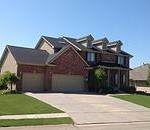There is no denying how important the roof of a home is. It not only plays a vital role in supporting the structure, but it also acts as the primary shield in protecting the interior of the home from the outside elements. During installation, a variety of potential materials can be used to construct the roof, each with different benefits and drawbacks. As somebody considering a new Roofing Omaha project on your home, take note of the two most commonly utilized roofing materials, and the various benefits they can provide for your home.
Slate
Commonly referred to as outdated by today’s standards, many people still prefer slate in Roofing Omaha. It still remains one of the most durable options out there, and tends to have a unique look that people find visually appealing. Typically, it is more expensive due to how heavy duty each piece of slate is. Much like utilizing slate tile for the interior of the home, slate roofs are made of pieces of slate that are split off a larger rock. They are a popular option in areas where severe weather is common, including heavy winds and regular rain. Additionally, many people who live in the Southwest enjoy incorporating slate roofing into the design of their home due to the natural appearance it reflects in relation to the surrounding landscape.
Shingles
Shingles are the most commonly utilized form of roofing. Manufactured in a wide variety of materials that vary from wood to metal, shingles are the most versatile option. They can be cut into different shapes to accommodate a particular structure, and they are inexpensive to produce. Due to this fact, most mainstream modern homes, particularly those in developed neighborhoods, utilize some form of shingle roof.
The roofing of our homes is no doubt an important element that ties everything together. Whether you are considering replacing an outdated roof, or in the process of planning a new build, carefully consider your options. As each variation of roofing comes with both benefits and drawbacks that are unique to the material and design. The above options are just two of the most notable choices that exist in the mainstream.




